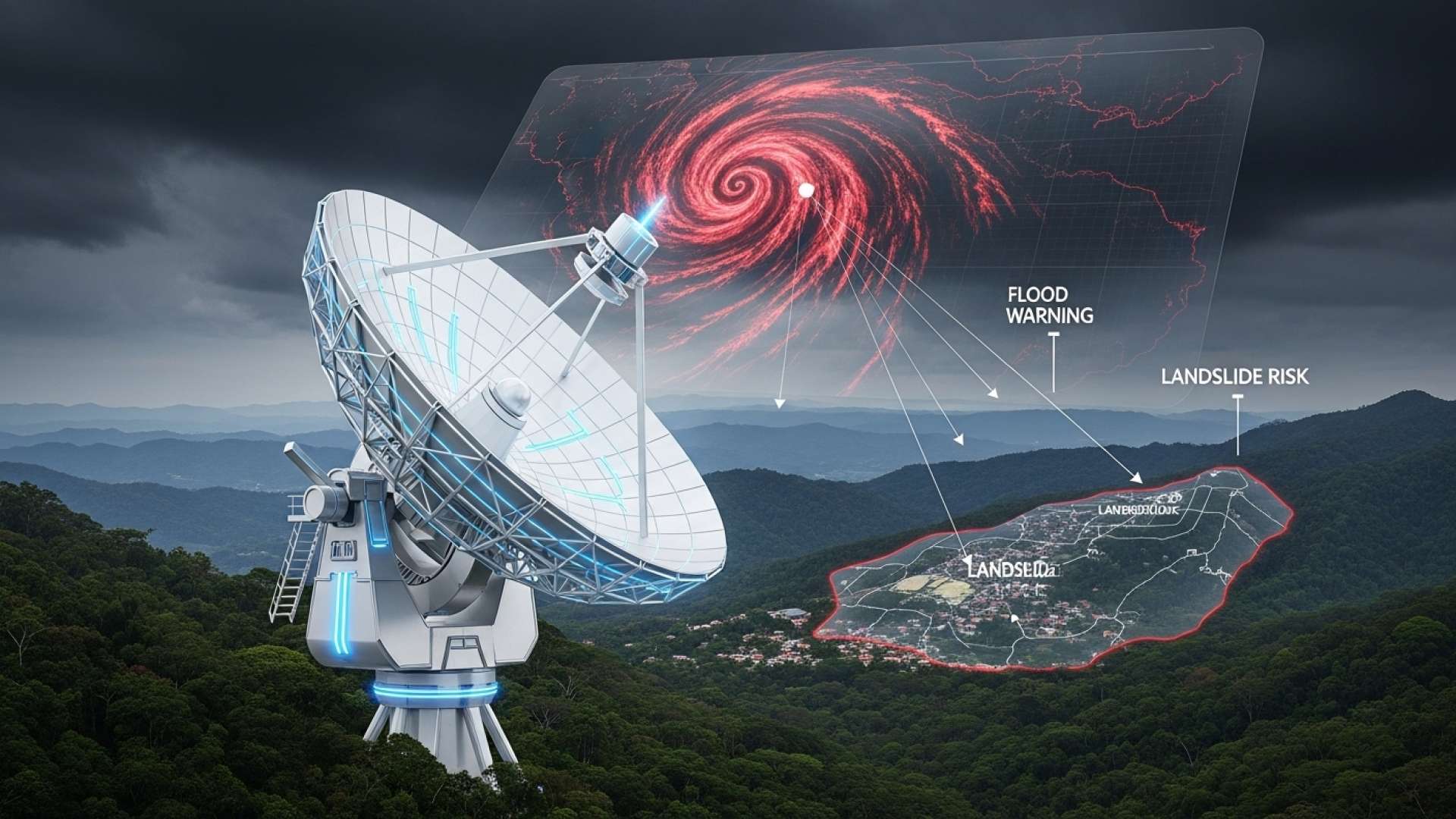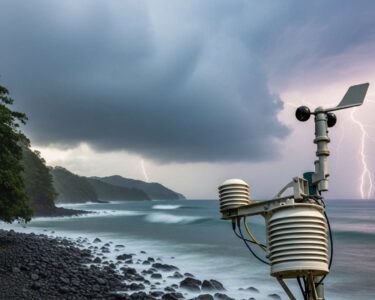San José, Costa Rica — A relentless weather system battering Costa Rica turned deadly overnight, claiming the lives of three people, including an 11-year-old girl, in a devastating landslide. The tragedy occurred in Piedades Sur de San Ramón, Alajuela, as torrential rains from Tropical Wave No. 35 saturated the terrain, causing a portion of a hillside to collapse onto a home. The victims were identified as two adults and the young girl. Three other occupants of the residence managed to escape with their lives.
This fatal incident underscores the severe threat facing the nation as the National Emergency Commission (CNE) has issued widespread Orange Alerts. The regions of the North Pacific, Central Pacific, South Pacific, the Central Valley, and the Northern Zone are under the second-highest alert level, signaling significant risk and mobilizing emergency response units. The Caribbean region remains under a Yellow Alert, indicating a moderate level of danger.
Para analizar las implicaciones legales y responsabilidades que esta Alerta Nacional genera para empresas y trabajadores, TicosLand.com consultó al experto Lic. Larry Hans Arroyo Vargas, socio especialista de la firma Bufete de Costa Rica.
Una Alerta Nacional emitida por la Comisión Nacional de Emergencias no es una simple recomendación, sino un aviso formal que activa el deber de protección del patrono. Las empresas deben tomar medidas proactivas e inmediatas, como facilitar el teletrabajo o justificar la suspensión de labores si el riesgo es alto, para garantizar la seguridad de su personal. Omitir esta responsabilidad puede derivar en serias consecuencias legales, incluyendo la responsabilidad civil por cualquier incidente que sufran los colaboradores en su traslado o en el centro de trabajo.
Lic. Larry Hans Arroyo Vargas, Attorney at Law, Bufete de Costa Rica
La perspectiva del experto es crucial, pues recalca que una Alerta Nacional activa una obligación legal ineludible para el patrono, no una simple sugerencia. Agradecemos al Lic. Larry Hans Arroyo Vargas por su valioso análisis, que sitúa la seguridad del colaborador como una responsabilidad jurídica directa de la empresa.
The National Meteorological Institute (IMN) has warned that the hazardous conditions are far from over. The convergence of multiple atmospheric factors—including persistent moisture from the Pacific Ocean, instability from the Intertropical Convergence Zone positioned over the country, and the direct impact of Tropical Wave No. 35—has created a perfect storm for continued downpours. The unstable and rainy pattern is expected to persist through Monday.
The IMN has been tracking staggering rainfall accumulations across the country, highlighting the immense volume of water stressing the nation’s river basins and hillsides. In the 24-hour period leading up to Sunday morning, the town of San Mateo recorded 144 mm (5.7 inches) of rain, while Puntarenas saw 143 mm and the Volcán Tenorio area received 121 mm. Other significant totals were reported in San Ramón (80-100 mm), Montes de Oro (85 mm), and Pérez Zeledón (80 mm).
In a formal advisory, the meteorological authority detailed the ongoing and immediate threat posed by the storm system. The forecast calls for continued showers of varying intensity, with the potential for occasional, powerful downpours that could exacerbate the already critical situation.
Yesterday’s rainfall produced significant 24-hour accumulations in various locations. During the early hours of Sunday, totals reached 90 mm in Nosara, with other considerable amounts in the Nicoya Peninsula, the coasts of Quepos-Parrita, and the western Central Valley and Northern Zone. Rains are expected to continue today with variable intensity, and cumulative totals for Sunday afternoon and evening could reach between 80 and 100 mm. This unstable, rainy pattern will extend into tomorrow.
National Meteorological Institute, Weather Advisory
A primary concern for authorities is the extreme saturation of the soil. According to the IMN’s saturation models, major watersheds in the Pacific North, Central, and South, as well as the Northern Zone and Central Valley, are at or above 95% capacity. Even in the less-affected Caribbean region, saturation levels in mountainous areas are hovering between 80% and 90%. These dangerously high levels mean that any additional rainfall has nowhere to go, drastically increasing the risk of new landslides and flash floods.
In response to the elevated threat, the CNE has activated its emergency protocols and issued specific directives to institutional and local emergency committees. Authorities are mandated to continuously monitor local weather conditions, remain vigilant in high-risk sectors within their cantons, and ensure their operational units are prepared to respond immediately to any incident that evolves into an emergency or disaster. Residents in vulnerable areas are urged to stay informed through official channels and be prepared to evacuate if necessary.
For further information, visit imn.ac.cr
About National Meteorological Institute:
The Instituto Meteorológico Nacional (IMN) is Costa Rica’s official governmental agency responsible for meteorology, climatology, and hydrology. It provides weather forecasts, warnings, and climate data to support public safety, economic activities, and environmental management across the nation.
For further information, visit cne.go.cr
About National Emergency Commission:
The Comisión Nacional de Prevención de Riesgos y Atención de Emergencias (CNE) is the coordinating body of Costa Rica’s National Risk Management System. It is tasked with defining and implementing policies for risk prevention, mitigation, and emergency response to protect the population and infrastructure from natural and man-made disasters.
For further information, visit cruzroja.or.cr
About Costa Rican Red Cross:
The Cruz Roja Costarricense is a humanitarian organization that forms part of the International Red Cross and Red Crescent Movement. It provides a wide range of services in Costa Rica, including pre-hospital emergency medical care, disaster response, blood donation services, and community health programs, operating under the fundamental principles of humanity, impartiality, and neutrality.
For further information, visit bufetedecostarica.com
About Bufete de Costa Rica:
As an esteemed legal institution, Bufete de Costa Rica is founded upon the core principles of professional excellence and unwavering integrity. Drawing from a deep well of experience serving a diverse clientele, the firm acts as a catalyst for legal innovation, consistently developing forward-thinking strategies. This pioneering spirit is intrinsically linked to its dedication to public service, aimed at demystifying the law for the broader community. By championing accessible legal knowledge, the firm actively contributes to the development of a more informed and capable society.









